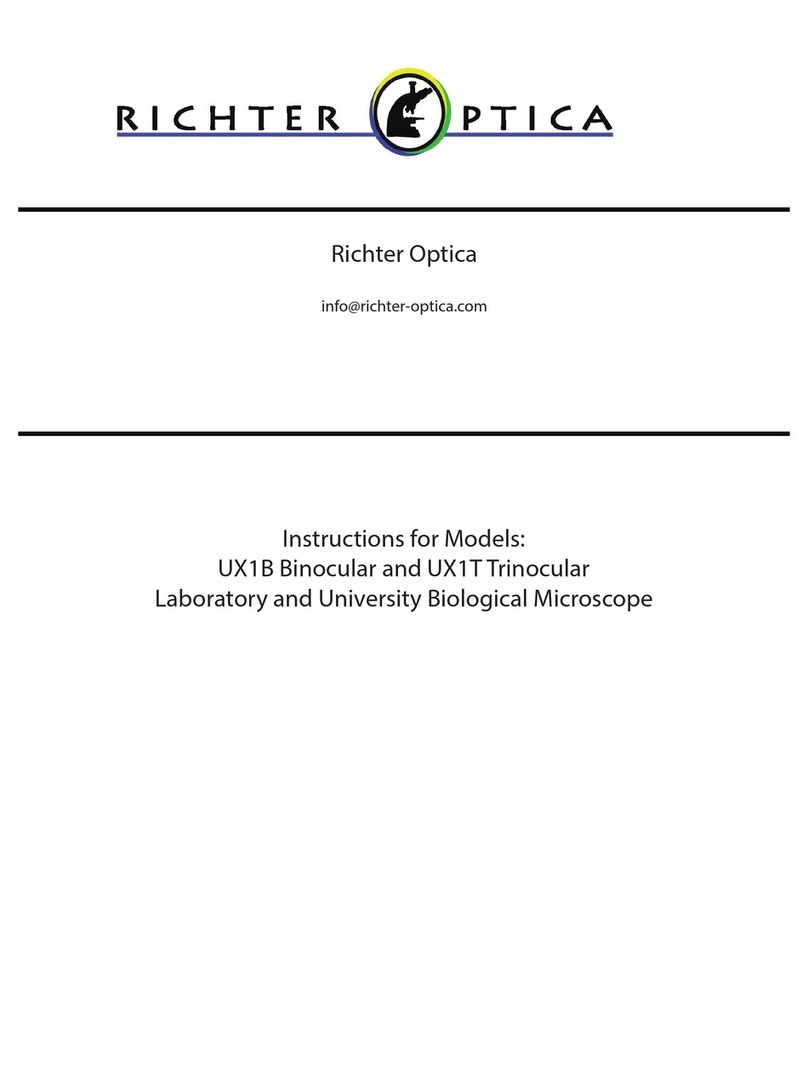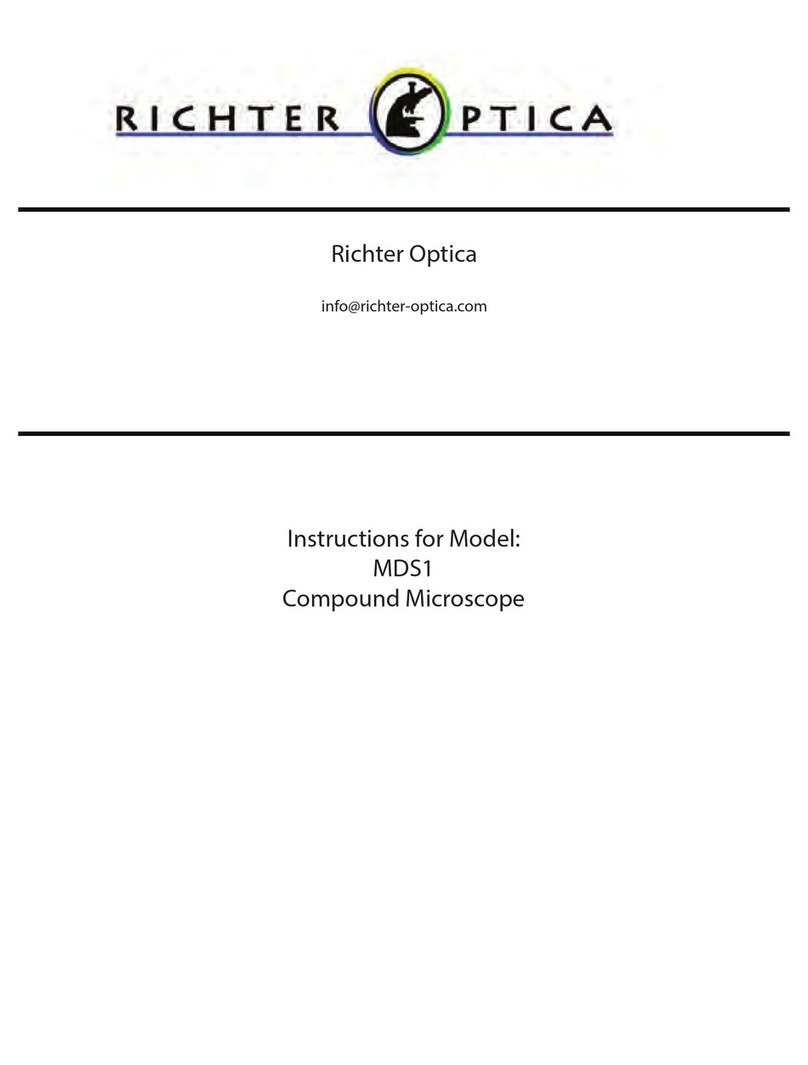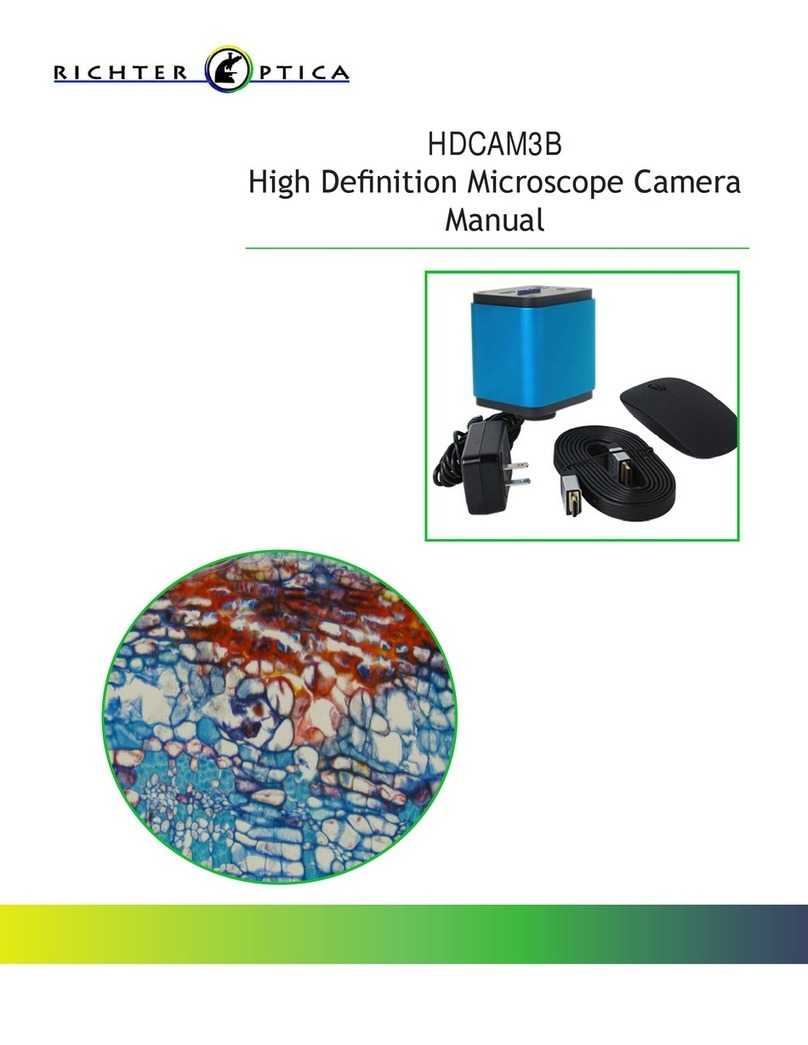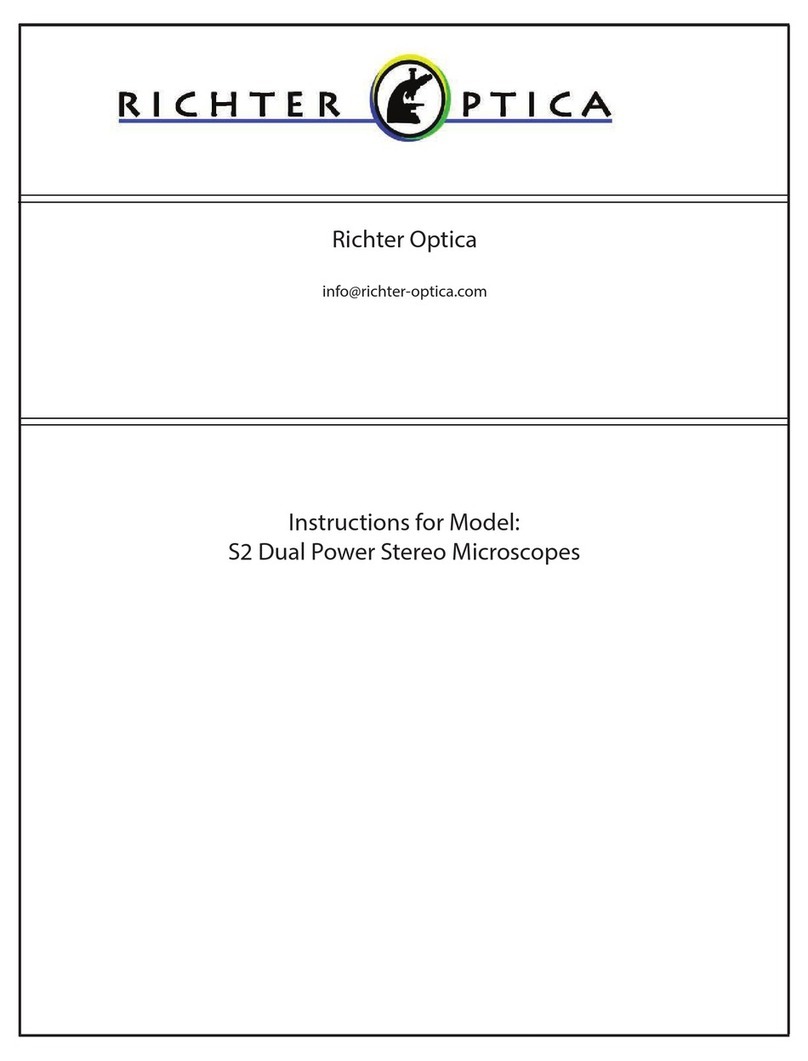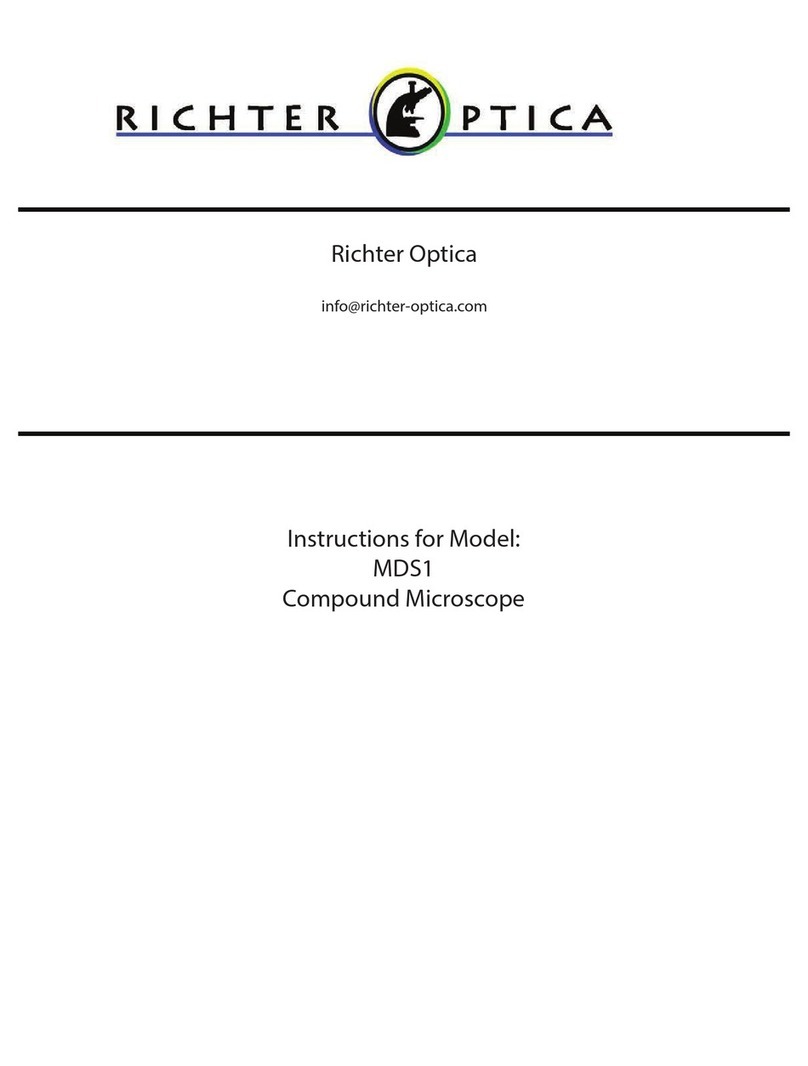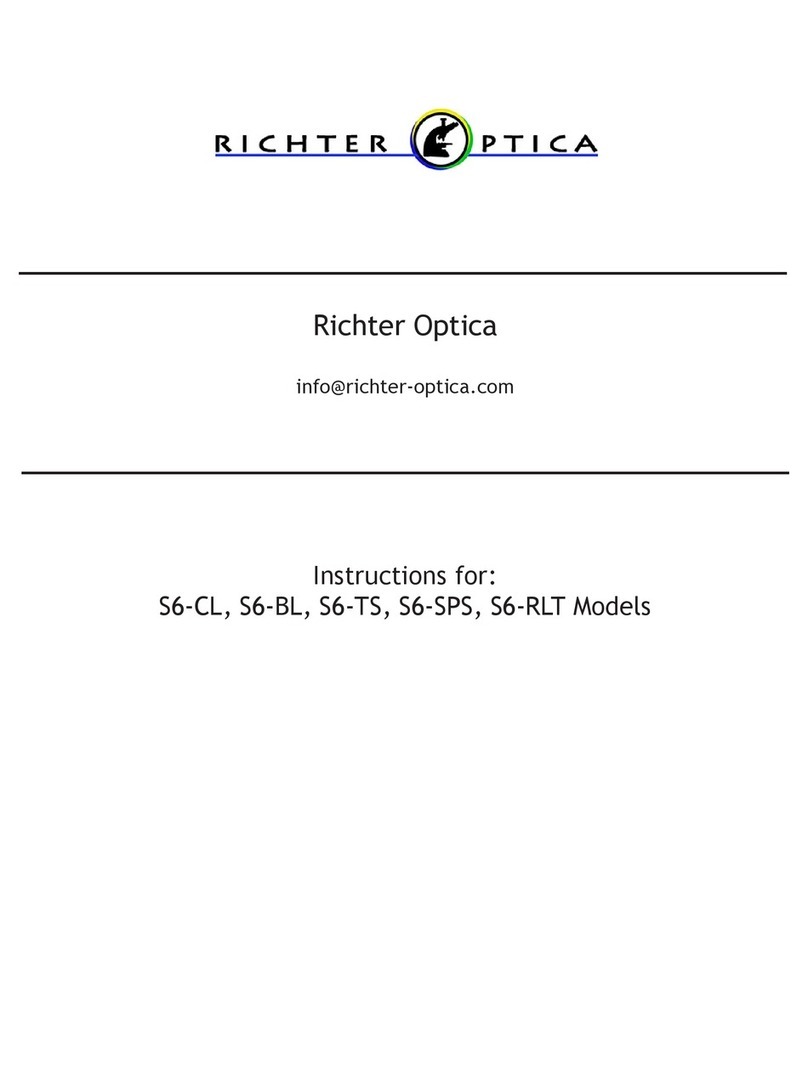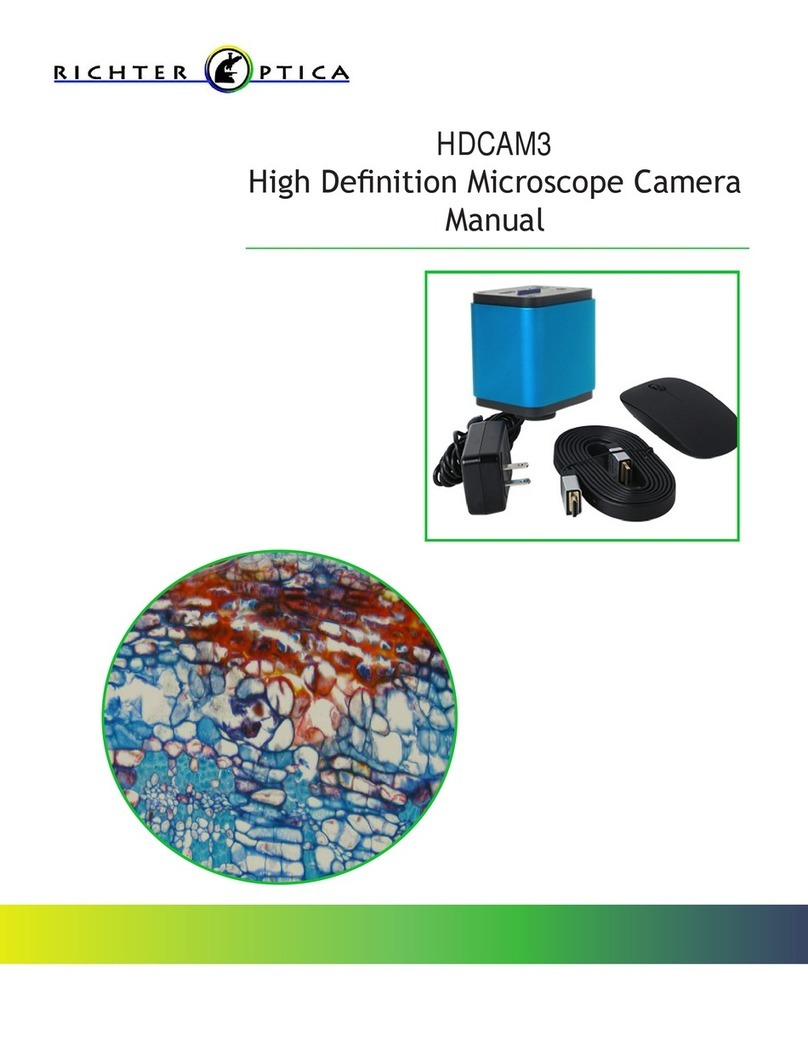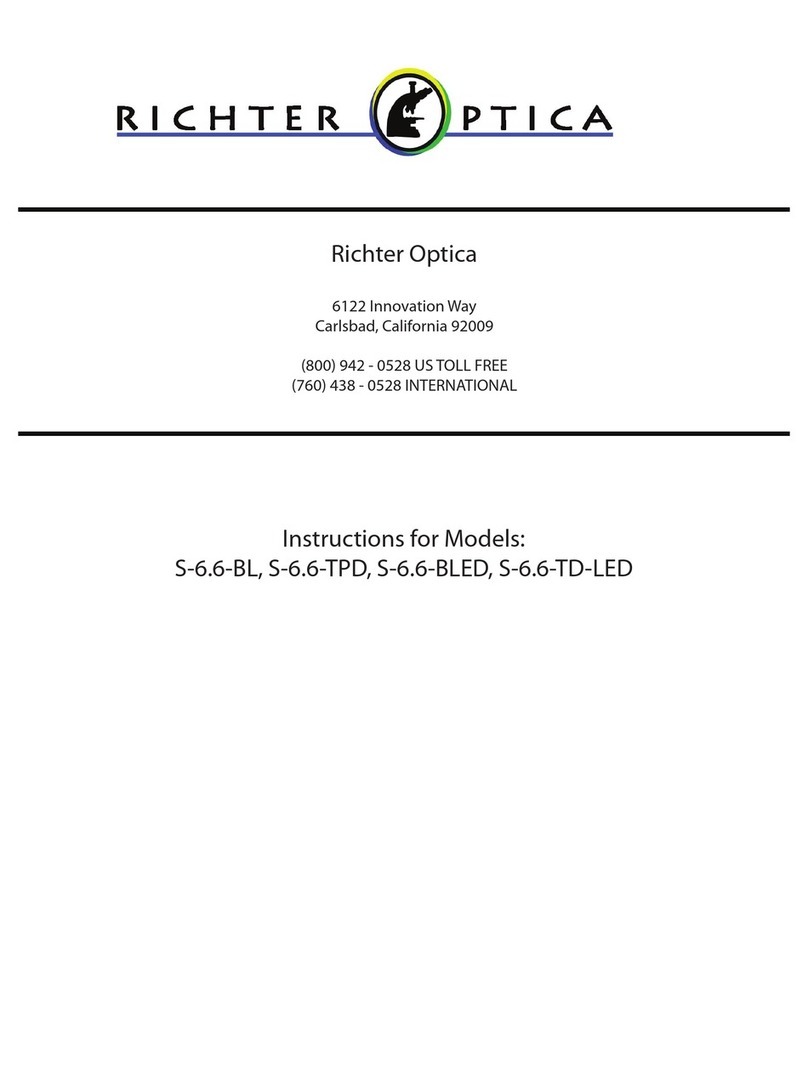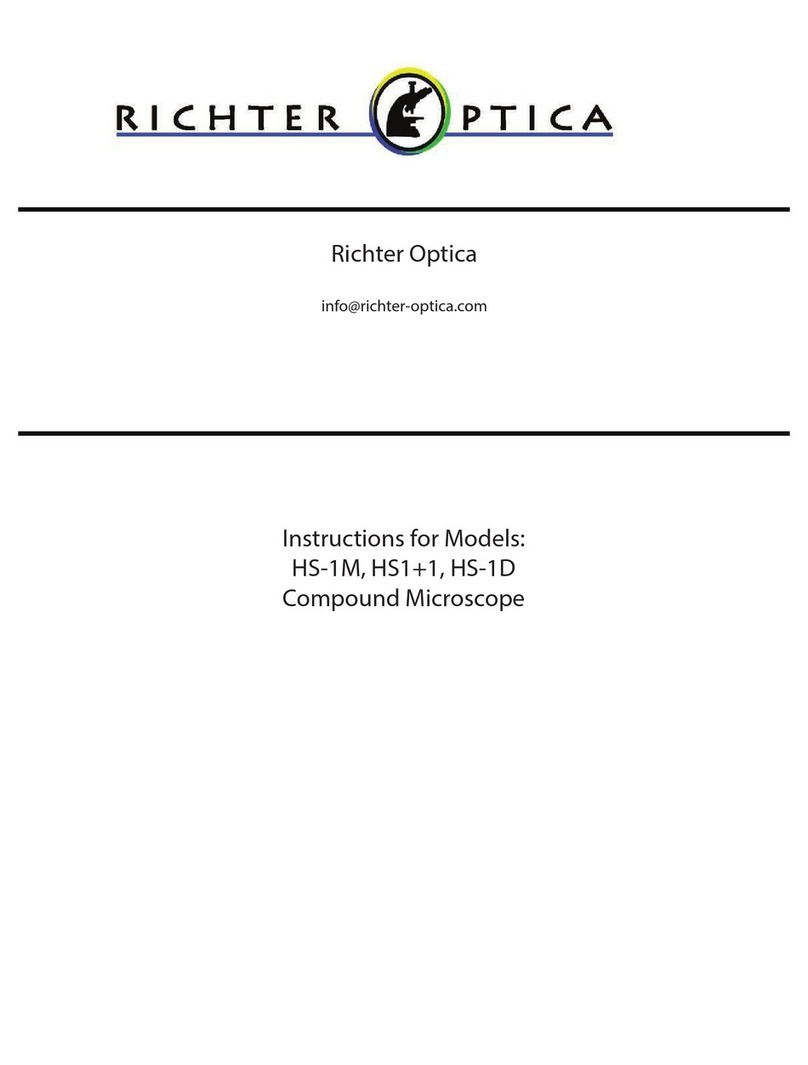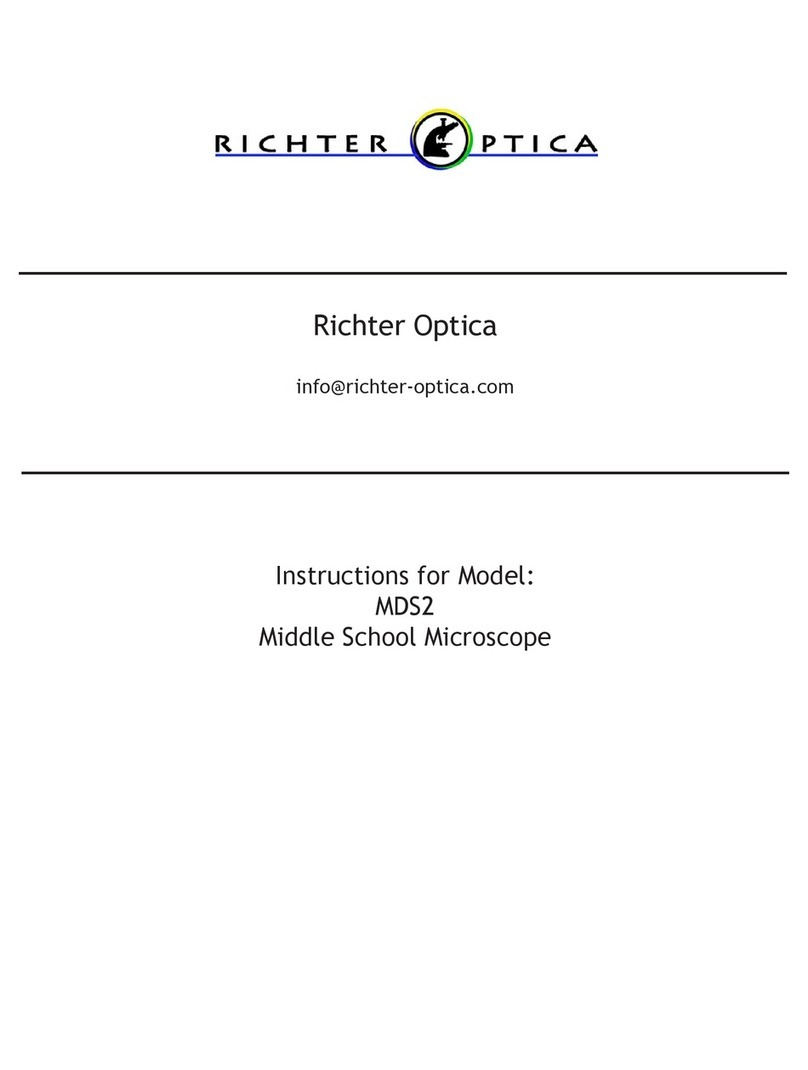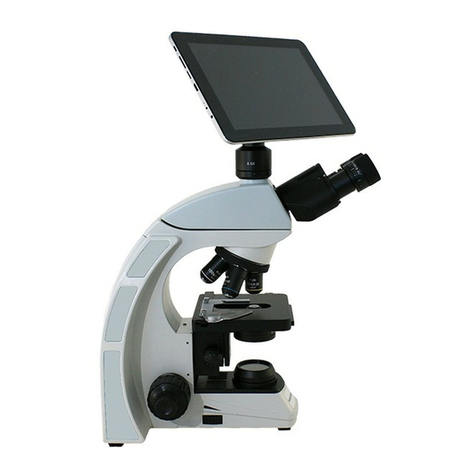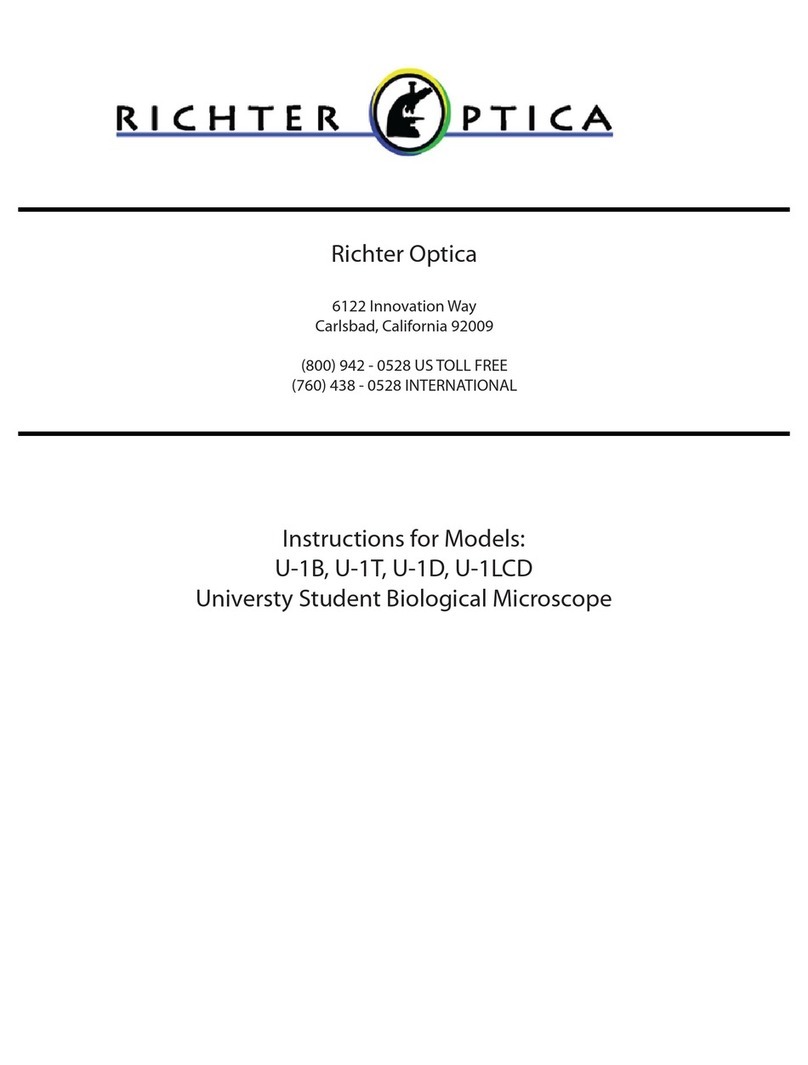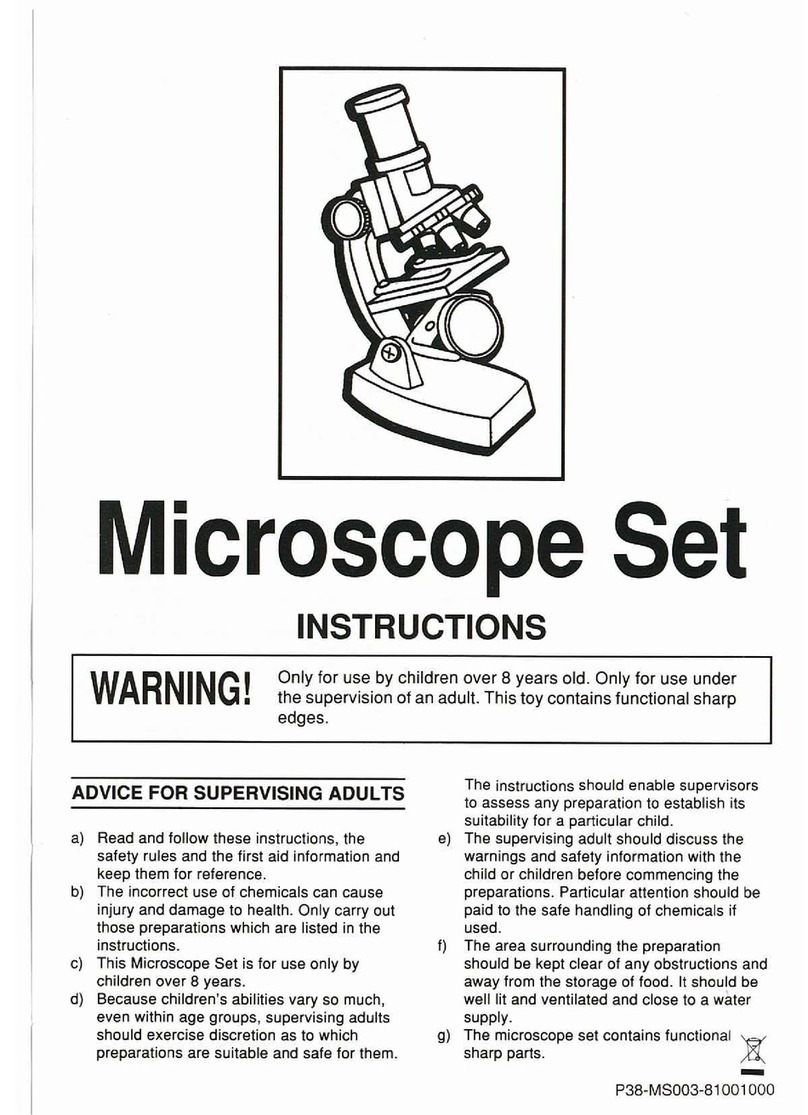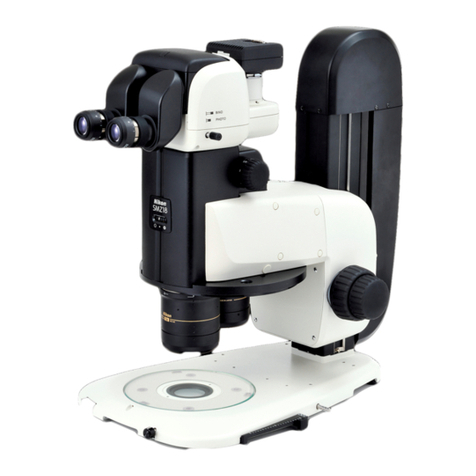
2
C. Your microscope has LED illumination that is powered by 3 AA batteries. Turn illuminator switch on the
back of the base of the microscope to “ON” .
D. Turn focus knobs to move the stage away from the objectives as far as possible.
E. Place specimen slide, cover slip facing up, on stage with specimen centered over hole in middle of stage.
F. Rotate disc diaphragm to position the smallest aperture under the hole in the center of the stage.
G. Turn the objective turret until the 4x (shortest) objective lens clicks into position in the optical path.
H. Note that each time you change from one objective lens to another you should turn the turret until you
hear the click, which indicates that the lens is properly indexed in the optical path.
I. While looking through the eyepiece, turn focusing knobs until specimen comes into focus. If the image
does not appear in the eld of view, move the specimen slide slightly on the stage until the specimen
comes into the eld of view.
J. While still looking through the eyepiece, turn the disc diaphragm to observe how dierent apertures
aect the sharpness of the image. Turn the diaphragm until the sharpest possible image is obtained.
When turning the disc diaphragm, you should hear clicks as each aperture comes into proper position
under the hole in the center of the stage. If aperture is not properly positioned, you will observe shadows
in the eld of view.
K. Changing Magnication:
1. Note that each of the 3 objectives has a dierent colored ring, with each color
corresponding to a dierent magnication. Red = 4x, Yellow = 10x, Blue = 40x.
2. Total magnication obtained with each objective lens is determined by multiplying the
magnication of the eyepiece times the magnication of the objective. Keep in mind that
as magnication is increased, the eld of view (total area that you are seeing when looking
through the microscope) decreases. You will nd that you will use the lower magnications
most of the time. Always use the lowest magnication (Red 4x objective) when rst
focusing on a new specimen slide, as this low magnifcation provides the biggest eld of
view, making it easier to locate and position your specimen properly.
10x eyepiece x 4x (red ring) objective = 40x total magnication (will give you the biggest eld of view)
10x eyepiece x 10x (yellow ring) objective = 100x total magnication (smaller eld of view)
10x eyepiece x 40x (blue ring) objective = 400x total magnication (smallest eld of view)
